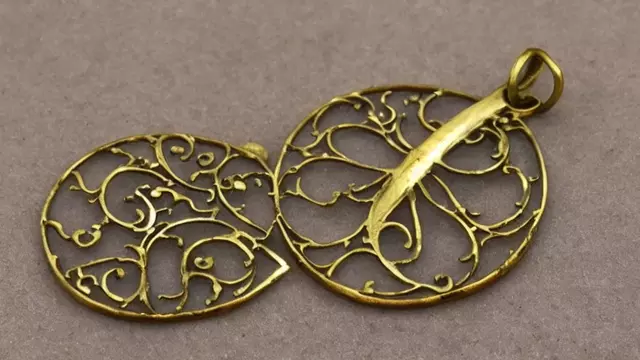Brass is an alloy, a mixture composed of copper and zinc. It is not a compound or an element. It can have a yellowish color, but it can also have different shades of gold, brown, and red depending on the composition.
Brass is not magnetic, as it is an alloy made up of non-magnetic elements.
What is brass made of?
Brass is an alloy made of copper and zinc. The proportion of copper to zinc can vary, giving brass different properties such as color and strength. Other metals like aluminum, lead, and tin can be added to brass in small amounts to give it specific characteristics. Brass is traditionally about 70% copper and 30% zinc by weight.
Is brass a mixture?
Yes, brass is a mixture of two metal elements: copper and zinc. Generally, brass contains between 65-80% copper and 20-35% zinc. This combination results in an alloy that is resistant to corrosion and has excellent machinability. It is also a relatively low-cost material, making it a popular choice for plumbing fixtures and hardware.
In addition, brass has good resistance to wear and tear making it an ideal material for musical instruments such as trumpets and tubas. Overall, its versatility makes brass a popular choice for many applications in the engineering and construction industries.
Is brass magnetic?
No, brass is not magnetic. This is because it is an alloy made of non-magnetic elements (copper and zinc). Magnetism only occurs when an element contains a large percentage of iron. As brass does not contain any iron, it is classified as non-magnetic.
Why is brass not a compound or element?
is brass a compound? No! is it an element? No! this is because it is a mixture of two metal elements, copper and zinc. A compound is defined as two or more molecules that are chemically bound together while an element is a substance that cannot be broken down into simpler substances.
Since brass is not chemically bonded, it does not fit either description and thus is classified as a mixture. Next time someone asks you if brass is a compound or element, you’ll know the correct answer!
What are the benefits of using brass?
Brass has many advantages that make it an appealing choice for many applications. It is extremely durable and able to withstand high levels of wear and tear without breaking down or corroding. other advantages include;
- Low friction
- Aesthetics
- Recyclable
- Cost-effective
Is brass heterogeneous or homogeneous?
Brass is a heterogeneous mixture. A heterogeneous mixture is one in which the components of the mixture are not evenly distributed throughout. In brass, the copper and zinc molecules exist in separate pockets, resulting in a two-phase system.
In comparison, a homogeneous mixture is one in which the components of the mixture are uniformly distributed throughout. However, this would not be the brass case, as the copper and zinc molecules are not evenly spread throughout the metal.
What color is brass?
The color of brass varies depending on the composition of copper and zinc. The amount of copper in the alloy will usually determine how red the brass will be.
The more zinc in the alloy, the yellower the brass will appear. In addition, surfaces that are highly polished or machined may have a golden or yellow tinge.
The color of brass can also vary depending on the finish applied to it, such as lacquer or bronze. In some cases, a black, grey, or maroon color may be seen on the surface of brass due to oxidation.
What is the difference between brass and bronze?
The main difference between brass and bronze is the composition of each material.
- Brass is an alloy made up of copper and zinc, while bronze usually contains copper and tin.
- The melting point of brass is also lower than bronze, typically around 900-940°C (1650-1720°F) compared to bronze melting at around 1090-1130°C (2000-2070°F).
- In terms of strength and durability, bronze is generally stronger and more resistant to corrosion than brass.
- Both materials have excellent machinability, but bronze is typically more expensive than brass. Depending on the application, either brass or bronze may be the better choice.
- Bronze is often used in electrical connectors and switchgear, due to its high conductivity, while brass is more commonly used for plumbing fixtures and hardware.
Conclusion
If you made it to this point, you probably have a good understanding of brass and its properties. Brass is an alloy made from copper and zinc, it is non-magnetic and not a compound or element.
It offers many advantages, such as low friction, aesthetics, and cost-effectiveness, but it is also heterogeneous in its composition. Brass may vary in color from yellow to golden and is often applied with a finish, such as lacquer or bronze.
Finally, brass is softer and cheaper than bronze, making it a great choice for certain applications. Thanks for reading!
